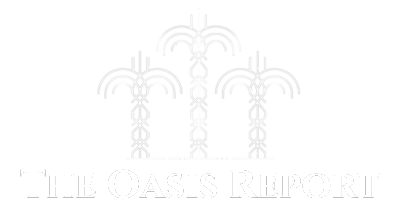Still on target for full-year forecast
Lenders are diversifying
Declining lending margins and fierce competition for customers will slow Saudi Arabian banks’ profit growth in the second quarter, although the industry remains on track to deliver strong full-year earnings.
The kingdom’s 10 largest banks made a combined first-quarter net profit of SAR22.2 billion ($5.9 billion), up 6.3 percent versus the preceding three months, according to consultant Alvarez & Marsal, in what was the biggest quarter-on-quarter increase since early 2024.
Yet second-quarter profits are likely to expand by a smaller amount as a result of declining net interest margins, says Shabbir Malik, a bank analyst at EFG Hermes in Dubai.
“That’s not necessarily a bad thing because even with lower earnings growth, Saudi banks should still be on target to match or exceed our expectations for 2025 full-year profits,” he says.
“The first quarter was strong and wasn’t sustainable for the rest of the year – some moderation in growth is normal and to be expected.”
The sector’s net interest margin fell 7 basis points to 2.87 percent in the first quarter, according to Alvarez & Marsal. They say it will drop further despite there being no benchmark interest rate cuts since last December, in part because loan growth is outpacing that of deposits.
This is pushing many lenders to diversify their fund sources, Malik says.
“These alternative sources aren’t as cheap as current account and savings deposits, so banks’ cost of funding is rising,” he says.
As well as competition to attract deposits, competition to extend loans has intensified, which is also pressuring margins, Malik says. “I expect a modest compression.”
Banks’ aggregate loan book was SAR3 trillion in the first quarter, up 16 percent year on year. Corporate loans represent 57 percent of total lending, Alvarez & Marsal estimates.
The sector’s loan-to-deposit ratio rose 1.45 percentage points in the first quarter to 106 percent. The ratios of Saudi National Bank, Al Rajhi and Riyad Bank – the three largest banks by assets – are all above 110 percent, although this does not mean the trio will be constrained in increasing the size of their loan books.
“It’s easy to attract more deposits if you offer higher interest rates to customers, but these banks prefer to obtain additional sourcing elsewhere, such as through issuing debt or certificate of deposits,” says Malik.
In the first quarter of 2025, the banking sector’s deposit-to-assets ratio was 63 percent, down from 68 percent a year earlier. This remainder comes from non-deposit funding such as equity and wholesale, which includes bonds, money markets and interbank lending.
“As the Saudi banking sector matures, it is diversifying its sources of funding, which is a positive,” Malik says.
However, its increasing dependency on non-resident funding may expose other vulnerabilities following June’s 12-day Iran-Israel war.
“This tends to be more sensitive to geopolitical risks, which may become more expensive for Saudi banks to reflect the perceived heightened risk,” Malik says.
Although high loan-to-deposit ratios will not crimp banks’ lending capabilities, “it will be more about whether they have sufficient capital to grow further. The Saudi banking sector is fine in terms of capital currently”, he adds.
Subdued oil prices are unlikely to have an impact on government spending on major projects, although it may cause government deposits at banks to fall and lenders’ asset quality could deteriorate.
“Should there be an economic slowdown, banks’ large corporate and retail loan books should be most resilient – it’s real estate, SME and mid-sized corporate lending that’s typically most vulnerable to defaults rising,” Malik says.
“There’s no indication that there’s anything to worry about regarding non-performing loans.”
Saudi banks’ three biggest earnings growth opportunities for the rest of 2025 are financing the country’s mega projects, mortgages and non-interest income streams such as asset management, wealth management, insurance, remittances and trade finance, Malik says.
Latest headlines from the Middle East conflict
For more news and analysis, see our Iran-Israel coverage



